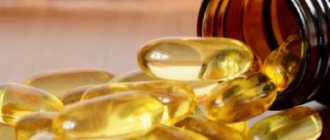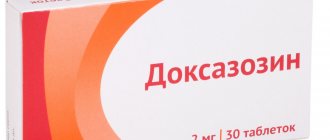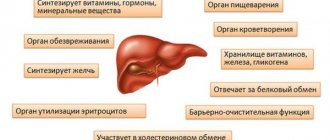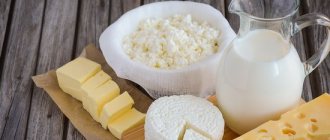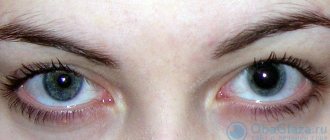Along with taking medications such as statins, experts recommend eating healthy foods every day to reduce cholesterol in the blood. But not many people know which foods increase cholesterol and which, on the contrary, help lower cholesterol levels.
Healthy food that cleanses blood vessels from atherosclerotic deposits can be consumed in its pure form. Various herbal infusions, teas and decoctions are also used. Today we will talk about which foods increase cholesterol and which lower it, as well as how to eat properly if the results of blood tests are outside the normal range.
To lower the level of bad cholesterol in the blood, it is necessary to develop a daily menu that includes a set of products that help cleanse blood vessels. It is better to do this together with a nutritionist, especially if you are prone to excess weight, hypertension and other health problems. The doctor will take into account all the important points and recommend products that are useful for a particular patient.
It is recommended to consume 50–60% complex carbohydrates from all food daily. These include foods that give a long-lasting feeling of fullness. This includes oatmeal, vegetables and fruits, whole grain bread, and cereal-based cereals. Fruit and vegetable salads are considered types of food that lower cholesterol levels, cleanse blood vessels, and give them tone and elasticity.
It is important to eat small meals. Eating small meals up to 5-6 times a day is healthier than eating too much 1-2 times a day. This way the gastrointestinal tract is unloaded, all the beneficial substances from food have time to be absorbed, and the person constantly feels full. If you suddenly feel hungry, you can satisfy it by drinking a glass of low-fat kefir or homemade yogurt.
It is worth considering the impact of bad habits on blood cholesterol levels. For example, smoking cigarettes has a negative impact on the condition of the body in general, and in particular on the condition of blood vessels. The risk of atherosclerosis increases, metabolism slows down, and the rate of cholesterol removal from the circulatory system decreases.
Alcohol is another enemy of people with high cholesterol levels. There is a theory that drinking dry wine helps strengthen capillaries, but daily consumption of 200–300 ml of this drink clearly does more harm to the body than good.
Varieties of poultry meat
- chicken;
- goose;
- duck;
- quail;
- turkey;
- partridge;
- grouse.
The presence of fats is influenced by the lifestyle and nutrition of birds. Cholesterol in chicken meat is quite low - 40-80 mg/100g. Chicken breast is considered the most valuable and healthy, and the bulk of triglycerides comes from chicken skin. Therefore, it is recommended to get rid of the skin when cooking. Geese and ducks are waterfowl, so they have a fairly large layer of fat, which affects high cholesterol levels.
Turkey is considered the leader among dietary poultry species. 100 g of turkey contains no more than 60 mg of cholesterol. Turkey protein is 95% digestible. Thanks to the high level of unsaturated fatty acids omega-3 and vitamin K, the heart is stimulated and blood vessels are strengthened.
The table shows average values per 100 g of product.
Essential fatty acids
Scientists have been trying for many years to determine which foods lower blood cholesterol. After numerous studies, it was found that essential fatty acids, which were first discovered in 1923, prevent the progression of atherosclerosis and prevent heart and vascular diseases. They are able to improve the quality of blood circulation, reduce inflammatory reactions and enhance cell nutrition. The daily norm of essential fatty acids is 5-10 g. They maintain the constancy of metabolism in the human body.
Essential fatty acids are a source of energy that is formed when they are broken down. They are not synthesized by the body and come to us mainly from food. The main representatives of essential fatty acids are Omega-3 and Omega-6.
Which foods are high in essential fatty acids?
Natural sources of essential fatty acids:
- flax seeds, flaxseed oil;
- soya beans;
- nuts;
- sunflower seeds;
- sea fish, especially salmon and trout;
- all seafood;
- sesame;
- cottonseed, olive, corn, rapeseed oils;
- wheat germ;
- wheat germ oil.
It is recommended to start monitoring the cholesterol content in foods not in old age, but much earlier. Atherosclerosis develops over decades, and the adverse consequences of this disease can and should be prevented.
A huge role in the prevention of heart and vascular diseases is given to the quality of nutrition. It is important not only to regularly consume foods high in good cholesterol (high-density lipoprotein), but also to eat fatty foods, trans fats and other “food junk” as little as possible.
In this video, experts talk about healthy foods that lower blood cholesterol levels.
Cholesterol in meat of large and small livestock, offal
Cattle meat includes beef, veal (young beef), small cattle - lamb, goat meat. Beef has low fat content and contains useful compounds such as collagen and elastin, which are involved in the construction of joint tissue. Veal is more tender in taste and is more dietary. Unlike beef, there is virtually no cholesterol in calf meat.
Mutton, lamb, is often recommended for overweight people, as the meat's saturated triglyceride content is extremely low. Thanks to this, lamb can be consumed for vascular atherosclerosis. The exception is lamb tail, which is saturated with fat.
Goat meat is not widely used due to its specific odor. Only young castrated goats are considered a delicacy. In many diets aimed at reducing cholesterol levels, this product is included in the list of allowed foods. There are few fatty streaks, it is easily digestible, and contains almost no contraindications.
Pork is a frequent “guest” in the home kitchen. It is widespread almost all over the world. The composition of pig meat varies significantly depending on the part of the carcass used.
The advantage is the ease with which the fatty layer (lard), which is animal triglycerides, can be separated. Pork lard contains a huge amount of bad cholesterol; it is strictly prohibited for consumption by people suffering from atherosclerosis.
Rabbit meat is the most famous dietary type of meat. It is mild in taste, hypoallergenic, and almost completely absorbed by the body. A special feature is the easy separation of fat from the lean part of the carcass. Microelements of rabbit meat have a positive effect on the cardiovascular system and improve blood composition.
Horsemeat contains triglycerides only in the rib region; the rest of the carcass is considered lean. Horse meat is not rich in saturated fatty acids, and therefore cholesterol levels are also low.
As can be seen from the table, rabbit meat contains the least amount of cholesterol, while fatty pork contains the most cholesterol.
Cooking has its own peculiarities. The first broth contains a lot of fat, so it is better to drain it. Boiled meat contains less sterol than fried meat.
It is not recommended to consume by-products if you have hypercholesterolemia.
The brain, liver and heart are capable of accumulating it. Sausages should be consumed with caution; they often contain lard and offal.
Last updated: March 21, 2019
| Finished products Cholesterol (mg) | |||
| Milk 6%, fermented baked milk - 1 glass | Boiled beef - 100 g | ||
| Kefir 1%, milk 1% - 1 glass | Boiled lamb - 100 g | ||
| Condensed milk - 1 tsp | Boiled pork without fat - 100 g | ||
| Milk 3%, kefir 3% -1 glass | Boiled rabbit - 100 g. | ||
| Low-fat kefir, skim milk (skimmed) - 1 cup | Boiled sausage - 100 g. | ||
| Raw smoked sausage – 100 g | |||
| Sour cream 30% - 1 tsp. l | Boiled-smoked sausage - 100 g. | ||
| Sour cream 30% - 1/2 cup | Sausages (1 pc.) | ||
| Cream 20% - 1/2 cup. | Lard, loin, brisket - 100 g | ||
| Low-fat cottage cheese - 100 g. | Kidneys - 100g. | ||
| Fat cottage cheese 18% - 100 g | Tongue - 100 g. | ||
| Cottage cheese 9% - 100 g. | Liver - 100 g | ||
| Curd cheese – 100 g | Udder - 100 g | ||
| Fat cheese – 25 g | Lamb fat 1 tsp. | ||
| Processed cheese and salted cheeses | Mayonnaise - 1 tsp | ||
| (cheese cheese, etc.) - 25 g. | Canned fish in tomato – 100 g. | ||
| Milk ice cream – 100 g. | Canned fish in its own juice - 100 g | ||
| Ice cream sundae - 100 g. | |||
| Creamy ice cream - 100 g. | Canned cod liver - 100 g. | ||
| Butter - 1 tsp. | Medium fat fish - sea bass, | ||
| Egg (yolk) | |||
| Poultry meat (goose, duck) - 100 g. | Lean fish - cod, navaga, hake, pike perch - 100 g | ||
| Chickens, white meat - breast with skin - 100 g | |||
| Chickens, dark meat - leg, back, neck with skin - 100 g | Shrimp – 100g | ||
| Crabs, squid – 100g | |||
| Chicken stomach – 100 g | Fish caviar (red, black) - 100 g... | ||
Nutrition for high blood cholesterol
Proper nutrition will help you lower blood cholesterol levels, delay the development of atherosclerosis, and significantly reduce the likelihood of heart attacks and strokes. Your blood vessels will remain “clean” and healthy longer. This will prolong your youth and life. For people with high cholesterol and atherosclerosis, it is important to adhere to 12 basic rules.
Product groups in detail
Next, we consider the main food groups and the effect of specific representatives on blood cholesterol levels.
Meat products
The list of animal products, namely meat, that it is advisable to exclude from the daily diet includes:
- pork, lamb;
- beef with a high fat content;
- duck, goose;
- salo;
- offal (kidneys, liver, hearts, etc.);
- poultry skin;
- sausages of any kind, frankfurters, small sausages;
- smoked meats;
- chopped meat.
The listed products should appear on the table extremely rarely and be components only of the holiday menu, but not of the everyday one. Lean beef, veal, bacon and ham are less harmful, but they also should not be abused.
The safest products are chicken, game, rabbit, hare and turkey meat (without skin). They can be consumed no more than two to three times a week, steamed, baked or boiled.
Fish and seafood
Caviar, shrimp, squid and other seafood cannot be classified as dangerous and increase cholesterol in the blood, but you should not abuse them either. Sea fish of fatty varieties, on the contrary, is considered a very healthy product, because it contains Omega-3 acids, which help restore and cleanse blood vessels.
You can eat it almost every day, but the cooking recommendations remain the same - stew, bake in the oven and boil. No frying in oil until crispy.
Dairy
It cannot be said that they cause irreparable harm to the health of people with high cholesterol; only some of them should be limited in use:
- cream;
- ice cream;
- whole milk;
- sour cream;
- condensed milk;
- fatty cheeses.
It so happened that dairy products are present in the daily diet of almost every person.
It is impossible to completely refuse to eat dairy products, because they contain calcium, which is necessary to maintain the strength of the bone skeleton. It is better to buy milk, cottage cheese and kefir with a reduced fat content, and use natural 1.5–2% yogurt instead of sour cream.
Chicken eggs
It has been established that an increase in blood cholesterol occurs with frequent consumption of egg yolks. At the same time, proteins are considered a safe product that can be eaten every day. Of course, you cannot completely exclude chicken eggs from your diet, but all experts recommend limiting their consumption to 1-2 times a week.
Vegetables and fruits
It has been proven that obese women almost always have high cholesterol levels. Therefore, nutritionists advise consuming as many vegetables and fruits as possible to eliminate both problems. It is advisable to eat them raw (at least a third of the daily amount), but you can bake, steam, boil or stew with a small amount of oil or without adding it at all.
Nuts and seeds
It has long been established that all types of nuts and seeds contain healthy fatty acids necessary to maintain vascular tone and prevent the deposition of cholesterol plaques. Therefore, nuts and seeds should be eaten regularly, giving preference to dried rather than fried foods.
Before use, they can be soaked in clean, cool water. This will improve the taste and add freshness. Nuts and seeds can be eaten in their pure form, used as an ingredient in salads, cottage cheese casseroles and low-calorie desserts.
Soups
As it became clear, a diet with high cholesterol should not contain large amounts of fat. Therefore, rich soups and broths are not suitable for people whose blood tests are far from ideal. You can switch to soups made from fish and vegetables without using frying in vegetable oil. If you cook meat or chicken broth, you must first remove all the fat, because it contains the bulk of cholesterol.
Main courses and side dishes
How much cholesterol is in milk?
What foods that increase blood cholesterol levels are prohibited:
- fried potatoes;
- pilaf made from pork, lamb, fatty beef;
- stewed potatoes with meat;
- French fries;
- Navy pasta.
These and other familiar dishes will have to be forgotten during the fight against cholesterol, and preferably at the end of the diet. To maintain the results obtained, you need to learn how to cook food as safely as possible - choose the method of steaming, oven or slow cooker.
The chicken should be boiled without skin, and the soup itself should not be seasoned with mayonnaise or sour cream.
If you can do without oil, it is better not to add it to the second dish. If necessary, replace regular vegetable oil with cold-pressed olive oil. Good grains for a side dish are black rice, buckwheat, oatmeal, beans.
Oils
When trying to lower cholesterol, it is advisable to completely stop consuming coconut, palm and butter oils. Although coconut and palm oils are plant-based and do not contain cholesterol, mindless consumption of them every day can negatively affect your health and cause obesity.
It is better to choose cold-pressed vegetable oils and use them not during cooking, but for seasoning ready-made dishes. Supermarket shelves are now stocked with a variety of olive, peanut, corn and sunflower oils.
Amaranth, hemp, and sesame are considered extremely useful for cleansing blood vessels - they can be purchased in health food departments or in markets for raw foodists.
Bread and pastries
Few people imagine lunch or dinner without bread. But it is better to replace a regular loaf with a loaf or coarse bread (whole grain or containing bran). You can make bread or crackers from rye flour at home by adding poppy, sesame, sunflower or pumpkin seeds. Store-bought pastries, buns, cookies, and cakes are prohibited.
Beverages
No matter how difficult it is to give up your usual drinks, it is worth limiting the consumption of soda, coffee with added cream, cocoa brewed with milk, cappuccino and alcohol. Suitable for daily consumption are black and green tea, still mineral waters, natural juices from unsweetened fruits, compotes, fruit drinks from berries, as well as simple boiled water.
Basic nutrition rules
According to doctors, there is bad and good cholesterol. The bad one is found in low-density lipoproteins. It is found in food in already prepared food. Good cholesterol has a high density and is transferred from tissues to liver cells. Ready-made good cholesterol is also found in food. In order to correctly compose your diet, you need to know in which products it can be found.
People with high blood cholesterol need to eat more fish. Fatty sea fish is especially useful. Every day, people with high blood cholesterol should eat at least 100 grams of tuna or mackerel. Eating fish stops blood clots and helps keep the blood in a thin state.
It is very useful for people with high blood cholesterol to eat seeds and nuts. To normalize your indicators, you can eat at least 30 grams of nuts every day. Particular emphasis should be placed on walnuts and hazelnuts. Cashews and salted nuts should not be consumed. Also, people with high blood cholesterol are recommended to eat fruits and vegetables. Potatoes, especially fried ones, should not be eaten every day. Overweight people are advised to exclude it from their diet.
You can eat apples and other fruits rich in pectin. Every day you need to eat at least 1 green fruit. This way you can remove excess cholesterol from the blood vessels. You can also eat citrus fruits, watermelons, melons. In case of an allergic reaction, citrus fruits should be excluded from the diet.
People with high blood cholesterol can and should eat beans and cereals. It is advisable to eat bran bread. It is recommended to eat porridge every day. People with high blood cholesterol should pay special attention to buckwheat and rice porridge.
Milk products
The main component of milk is animal fat. This means that it contains some cholesterol. In 100 grams of 1% of the product its content reaches 3.2 mg. The cholesterol content in 100 grams of milk with 6% fat content reaches 23 mg.
Goat milk has the highest cholesterol content. It is much fattier than cow's milk. But its use is not contraindicated for people who have increased cholesterol. Being close in its composition to human milk, it is easily absorbed by the body and satisfies all its needs. This milk also contains a considerable amount of phospholipids. They stop the deposition of harmful cholesterol in blood vessels.
Particular attention should be paid to the consumption of dairy products. The cholesterol content depends on the fat content of the milk. 100 grams of cottage cheese contains from 1 to 40 mg. Fat sour cream contains up to 200 mg. 10% sour cream is considered a dietary product. You can eat a lot of it even with some diseases.
Red caviar
The composition of the product is as follows:
- protein – 30%;
- carbohydrates – 4%;
- fat – 18%.
Red caviar contains a lot of calories. Regardless of the fish, the calorie content of 100 grams of caviar reaches 252 kcal. There is a lot of cholesterol in red caviar - 300 mg/100 grams. But this does not mean that you should refuse to use this product. Red caviar contains beneficial omega-6 and omega-3 acids. They help cleanse the body of harmful cholesterol.
Red caviar also contains a whole vitamin complex. The combination of these vitamins helps to quickly tone the entire body. Healing occurs at the cellular level. The beneficial substances found in red caviar help to activate brain activity. Periodic use of a quality product successfully stops blood clots.
Caviar should be consumed carefully and in doses. The norm for the body is 1 tablespoon of red caviar per day. Exceeding this value is fraught with additional stress on the body.
Meat products
The largest amount of useful substances is found in lean lamb. But a person suffering from heart or vascular diseases should use it with great caution. This is explained by the fact that lamb contains a fairly high percentage of cholesterol.
Many doctors treat lamb with distrust and recommend that their patients avoid eating this meat altogether. In total, lamb contains approximately 70 mg of cholesterol, and 100 mg is found in fat tail.
A person who is allowed lamb should know that the percentage of cholesterol depends on the part of the carcass. To avoid negative consequences, you should not eat brisket and ribs.
Foods that raise cholesterol
Margarine
Margarine is a vegetable solid, hydrogenated fat, the so-called harmful to human health, which should be kept in mind not only by sick people, but also by completely healthy people. The sooner you give up trans fats, the better. Hydrogenated fats contribute to increased levels of “bad” cholesterol in the blood.
Sausage
Most sausages are made from pork, which contains high amounts of cholesterol. Not to mention questionable additives, which require a separate discussion.
Egg yolks
Chicken egg yolk is one of the champions in cholesterol content among foods. However, there is new evidence that high cholesterol in eggs is not as harmful as that in meat. And the advantages of eating yolks outweigh the disadvantages. Lecithin alone is worth it!
Caviar
Yes, yes, a delicacy so valued by many people, an ingredient in bread and butter sandwiches so beloved by gourmets, a real treasure trove of cholesterol!
Liver paste
Another by-product (i.e. a product related to the insides of meat, fish, poultry). Without exception, all offal products contain much more cholesterol than meat from any other part of the animal’s body.
Canned fish
Alas, if you like sprats or sardines in oil, you will have to part with your love. Or allow yourself these high-cholesterol treats only on major holidays. Perhaps some consolation will be that canned fish in its own juice is not dangerous. You can enjoy tuna or cod on the water along with the ingredients they contain.
Cheese
Hard cheeses are often fatty and have high cholesterol levels, so when choosing a variety, give preference to low-fat ones. Stay away from 45-50% cheeses. We shouldn’t give up cheeses completely, as we need calcium.
Processed meat
What is meant? Bacon, canned meats and other pleasures of life that are processed meats are by no means made from “skinny” cuts.
Fast food
Oh, this fast food! He's always suspicious, even when we order a light Caesar salad. But the mistrust is justified: fast food restaurants tend to use fatty cuts of hamburger meat and fry it in high-cholesterol oil (animal fat).
Shrimp and Kº
Oysters, clams, mussels and shrimp are quite high in cholesterol. Like real animals, not like fish (it has less cholesterol)!
What can you drink
Vegetable and fruit drinks are a great help in the fight against high cholesterol. Regular consumption of these drinks helps to quickly remove excess lipoproteins from the body. The greatest amount of useful substances is contained in the following drinks:
- tomato juice;
- dry red wine;
- green tea.
It is also very useful to drink cocoa, buckwheat jelly and Jerusalem artichoke drink.
Tomato juice
The juice of ripe tomatoes brings significant benefits to the human body. Tomato juice contains the necessary zinc, iodine and iron. Being an excellent preventative, it helps normalize digestion and remove toxins from the body.
The main active ingredient in tomato juice is lycopene. This powerful antioxidant promotes the rapid death of carcinogenic cells. The product is also indispensable in the fight against cardiac and vascular pathologies. It not only removes a variety of toxins and waste, but also normalizes cholesterol levels.
Nutritionists recommend drinking only fresh juice. You need to drink it regularly, for 2 months, two to three times a year. In total, a person is recommended to drink at least 1/2 liter of juice. The volume should be distributed into approximately four to five servings.
A greater effect can be achieved if you drink tomato juice half an hour before meals. It is important to ask your doctor in advance about contraindications. It is strictly not recommended to drink tomato juice for people suffering from gastric ulcers. Those who suffer from chronic gastritis or cholecystitis should also avoid this drink.
The benefits of dry red wine
According to many nutritionists and doctors, drinking alcoholic beverages is significantly harmful to health. The main danger is that a person can get hooked on alcohol. This leads to the development of many dangerous diseases.
But the benefits of dry red wine have been successfully proven. Today, this tart drink is actively used in the fight against vascular and cardiac anomalies. Also, wine, if you do not overdo it with its consumption, helps to tone the body and slow down the aging process.
This is explained by the fact that grape seeds have a considerable percentage of bioflavonoids. Grape skins contain large amounts of chromium. The combination of these elements helps improve blood composition. Against this background, harmful cholesterol is evacuated from the blood vessels. At the same time, good cholesterol levels are normalized.
In order for this exquisite drink to bring only benefits to the body, you need to know how to drink it correctly. It is recommended to drink no more than 100 milliliters of dry red wine. You should drink dry red wine during meals, preferably at lunch or dinner.
Benefits of green tea
Natural green tea helps prolong youth and stop the progression of heart pathologies. This refreshing drink has what the body needs:
- enzymes;
- amino acids;
- mineral salts.
The combination of elements helps strengthen the immune system. The human body learns to fight various viruses, fungi and bacteria. The leaves of the tree are rich in catechins - powerful antioxidants. Therefore, green tea is a wonderful prophylactic agent that destroys carcinogens.
Drinking the drink also helps cleanse the human body of zinc and other heavy metals. With its regular use, excess cholesterol is removed from the body.
You can drink this drink every day. Doctors recommend drinking no more than two or three servings of tea. It is best to drink 1/2 cup. Sugar and milk should not be added. Drinking the drink before bed is not recommended. It is rich in caffeine, which makes it difficult to fall asleep.
It is also important to learn how to brew green tea correctly. Before pouring the tea leaves, the kettle should be rinsed with boiling water.
Benefits of cocoa
Natural cocoa contains a considerable amount of useful substances. Doctors call this aromatic drink a natural antidepressant. Possessing endorphins and serotonin, it helps relieve nervous tension.
This unique drink also contains flavanol. This valuable antioxidant nourishes the brain and improves insulin sensitivity. Regular consumption of this drink cleanses the vascular walls of dangerous plaques, thereby stimulating the activity of important systems.
It is best to drink this drink after waking up. The maximum permissible dose is 1 small cup. It is better for a person suffering from increased secretion of gastric juice to avoid drinking cocoa.
People who want to normalize their cholesterol levels should limit their consumption of meat products. It is also important to stop smoking and drinking alcohol.
Cholesterol is a fat-soluble alcohol of “unknown” purpose, most of which is synthesized by the human body (on average, about 80% of the total volume). The rest enters the body as part of animal products. Cholesterol is used by the body as a building material for cell membranes, protects red blood cells from hemolytic poisons, and also participates in the synthesis of bile acids, vitamins D and sex hormones (testosterone and estrogen).
Biological role of cholesterol
Cholesterol is a dense, waxy, white substance that has the properties of fats. The adult human body contains about 350 g of this compound (90% in tissues, 10% in blood). More than 80% of cholesterol is produced by the liver, adrenal glands, gastrointestinal tract, kidneys and gonads. The remaining 20% enters the human body with food.
Cholesterol performs several biological functions at once. Specifically this connection:
- is a building material for plasma membranes of cells, ensuring their stability over a wide temperature range;
- protects red blood cells from the negative effects of hemolytic poisons;
- regulates cell permeability;
- increases the activity of membrane enzymes;
- protects intracellular structures from the negative effects of free oxygen radicals;
- participates in the synthesis of vitamin D;
- takes part in the production of bile acids and a whole range of steroid hormones by the adrenal glands (estrogens, testosterone, progesterone, aldosterone, cortisol, etc.);
- improves the functioning of the immune system.
Along with this, the substance creates the necessary conditions for normal brain function and participates in the formation of new synapses. American scientists were able to experimentally prove that a high level of “good” cholesterol in the blood helps reduce the likelihood of developing Alzheimer’s disease in older people by 30–40%.
Why is high cholesterol harmful?
Today, cholesterol is considered the main cause of one of the most common diseases of our time - atherosclerosis. Most doctors and ordinary people are convinced that cholesterol is the terrible substance that causes hundreds of thousands of people around the world to die every year. But is this really so?
It turns out that there are several theories to explain the formation of sclerotic plaques on artery walls. Moreover, in some of them cholesterol does not play the main role...
For example, many scientists believe that atherosclerosis occurs not so much due to excess cholesterol in the blood, but due to a violation of lipid metabolism in the human body. Cholesterol plaques, in their opinion, may well be just a consequence of such a disorder.
Moreover, despite the existence of different opinions on this matter, all experts agree on one thing: the risk of heart attack and stroke directly depends on the level of cholesterol in the blood. Therefore, it is vital to understand which factors have the greatest impact on the level of cholesterol in a person’s blood.
Modern medicine identifies the following factors:
- smoking
- physical activity
- culinary preferences and water consumption regime
- body mass
- the presence of various diseases such as diabetes, hypothyroidism, alcoholism, etc.
How to lower blood cholesterol levels? Very simple! You just need to not smoke, not drink alcohol, not suffer from terrible diseases, lead an active lifestyle, watch your own weight, drink more water and eat right.
Isn't it simple? All that remains is to find the strength to do all this, and also figure out what to eat if you have high cholesterol. But first, let's get acquainted with the norms for cholesterol levels in human blood...
The level of cholesterol in a person's blood is considered normal if it falls within the range of 70 to 190 mg/dL (1.8-5 mmol/L). Anything that goes beyond these limits requires, at a minimum, a thorough consultation with a doctor, and, at a maximum, immediate adoption of measures to reduce blood cholesterol by influencing the factors mentioned above.
The same applies to situations where the proportion of high-density lipoproteins (HDL) is less than 20% of the total amount of cholesterol in the body.
And now we bring to your attention a list of foods that contain large amounts of cholesterol.
Foods that lower blood cholesterol
The diet includes foods low in lipids. It should achieve two main results:
- Reduce the amount of fats that enter the body from outside.
- Neutralize the existing volume of cholesterol circulating along with the blood flow through the vessels.
The second point involves preparing dishes from foods that stimulate the synthesis of high-density lipoproteins (“good” cholesterol). These mainly include vegetables, fruits, and grains.
Carrots, like other root vegetables, can lower LDL levels by 15%. To do this, you need to eat two medium-sized vegetables every day, preferably raw.
Tomatoes, namely tomato juice, reduce blood cholesterol levels by 10% if you drink two glasses of the drink per day.
Garlic is effective even when atherosclerotic plaques appear; due to the special compound allicin, it promotes the breakdown of neoplasms in blood vessels.
Nuts and seeds in limited quantities (with the exception of hazelnuts, pistachios and peanuts) reduce fat levels by 5%, but stimulate the synthesis of “good” cholesterol by 8%.
Legumes, eaten in an amount of 350 milligrams per day, reduce cholesterol by the end of the third week by almost a quarter of the total amount.
Fresh produce, cabbage, citrus fruits, and berries are rich in fiber. It binds fatty acids while still in the stomach cavity and removes them through the intestines, stimulating organ motility. In addition, the listed products contain large quantities of essential vitamins and minerals that accelerate metabolism and the conversion of lipids into more useful compounds, for example, sex hormones. By the same principle, whole grain cereals and wholemeal bread affect the body.
Many people have heard that high cholesterol is dangerous to health. But not everyone knows what exactly needs to be done and what exactly to limit themselves to.
Foods containing cholesterol
As you understand, it is not possible to list all the food products that contain cholesterol, because there are hundreds and even thousands of them (according to the types of living creatures used for food). Therefore, we propose to highlight several of the most popular food groups that contain cholesterol...
| Product | Cholesterol content (mg/100 g) |
| Cholesterol in meat and offal | |
| Pig meat (pig meat) | 40 |
| Pork | 60-70 |
| Beef and veal | 70-100 |
| Mutton | 70 |
| horsemeat | 50-60 |
| Rabbit meat (rabbit meat) | 40 |
| Brain | 770-2300 |
| Beef by-products (liver, kidneys, heart) | 140-300 |
| Pork by-products (liver, kidneys, heart) | 120-200 |
| Boiled sausage (Doctorskaya, Milk) | 50 |
| Pork sausages | 70 |
| Sausages | 50 |
| Cholesterol in eggs and poultry | |
| Chicken | 40-80 |
| Goose | 100-110 |
| Duck | 40-60 |
| Turkey | 130-210 |
| Chicken (broiler) | 60-70 |
| Chicken egg | 570 |
| Quail egg | 600 |
| Egg yolk | 1000-1100 |
| Cholesterol in fish and seafood | |
| Fatty fish (halibut, carp, capelin, pink salmon, salmon, mackerel, herring, sturgeon, herring, sprat, eel) | 45-140 |
| Lean fish (tuna, perch, pike, crucian carp, pike perch, blue whiting, smelt) | 40-70 |
| Fish caviar | 250-450 |
| Squid meat | 85 |
| Mussels | 40 |
| Oysters | 50 |
| Crabs, crayfish, shrimp | 90-210 |
| Octopuses | 50 |
| Cholesterol in animal fats | |
| Butter (depending on fat content) | 140-190 |
| Pork, beef fat | 100-120 |
| Fish fat | 570 |
| Chicken fat | 95 |
| Cholesterol in dairy products | |
| Cheese, including processed cheese (depending on fat content) | 50-120 |
| Sour cream (10-30% fat content) | 30-140 |
| Cream (10-35% fat) | 30-140 |
| Milk, kefir, yogurt | to 10 |
| Condensed milk | 30-40 |
| Cottage cheese (2-18% fat) | 7-60 |
| Glazed cheese curds | 10-60 |
Please note that the amount of cholesterol in food products depends mainly on their fat content. The higher the fat content, the more cholesterol, and vice versa.
On top of that, you may have already noticed that Table 1 contains only animal products. The reason for this “discrimination” is simple - animal products contain cholesterol, but plant products do not.
However, it should be borne in mind that cholesterol in the blood increases not only from foods rich in cholesterol. Its amount in the body also increases because certain types of substances (toxins, free radicals, etc.) damage the tissues and arteries of the body, thereby stimulating increased cholesterol synthesis in the human liver. In this regard, we recommend eating less trans fats, which are contained in most margarines, in foods fried in oil, sausages and industrial baked goods (especially cookies), and also try to reduce the proportion of fried, high-protein and other foods in your diet. which contain elements harmful to the body.
On the other hand, on the contrary, among animal products there are those that help remove cholesterol from the body. The same applies to plant products, most of which are quite effective and quickly reduce cholesterol in human blood.
Cholesterol in food: complete table
| Product containing cholesterol - 100 g | Amount (mg) | |
| Meat, meat products | ||
| Brain | 800 — 2300 | |
| Kidneys | 300 — 800 | |
| 110 | ||
| Pork, loin | 380 | |
| Pork knuckle | 360 | |
| Pork liver | 130 | |
| Pork tongue | 50 | |
| Fatty beef | 90 | |
| Beef lean | 65 | |
| Lean veal | 99 | |
| Beef liver | 270-400 | |
| Beef tongue | 150 | |
| Venison | 65 | |
| Roe deer meat back, leg, back | 110 | |
| horsemeat | 78 | |
| Lean lamb | 98 | |
| Lamb (summer) | 70 | |
| Rabbit meat | 90 | |
| Skinless chicken dark meat | 89 | |
| Skinless chicken white meat | 79 | |
| Chicken heart | 170 | |
| 492 | ||
| Broilers 1st category | 40 — 60 | |
| Chick | 40 — 60 | |
| Turkey | 40 — 60 | |
| Duck without skin | 60 | |
| Duck with skin | 90 | |
| Goose | 86 | |
| Veal liver sausage | 169 | |
| Liver pate | 150 | |
| Raw smoked sausage | 112 | |
| Sausages | 100 | |
| Sausages in jars | 100 | |
| White Munich sausage | 100 | |
| Smoked mortadella | 85 | |
| Salami | 85 | |
| Vienna sausages | 85 | |
| Cervelat | 85 | |
| Boiled sausage | up to 40 | |
| Boiled fatty sausage | up to 60 | |
| Fish, seafood | ||
| Pacific mackerel | 360 | |
| Stellate sturgeon | 300 | |
| Cuttlefish | 275 | |
| Carp | 270 | |
| Natothenia marble | 210 | |
| Oysters | 170 | |
| Acne | 160 — 190 | |
| Mackerel | 85 | |
| Mussels | 64 | |
| Shrimps | 144 | |
| Sardines in oil | 120 — 140 | |
| Pollock | 110 | |
| Herring | 97 | |
| Mackerel | 95 | |
| Crabs | 87 | |
| Trout | 56 | |
| Fresh tuna (canned) | 55 | |
| Shellfish | 53 | |
| Cancer | 45 | |
| Sole | 50 | |
| Pike | 50 | |
| Horse mackerel | 40 | |
| Cod | 30 | |
| Fish of medium fat content (up to 12% fat content) | 88 | |
| Low-fat fish (2 - 12%) | 55 | |
| Egg | ||
| Quail egg (100 g) | 600-850 | |
| Whole chicken egg (100 g) | 400-570 | |
| Milk and dairy products | ||
| Raw goat milk | 30 | |
| Cream 30% | 110 | |
| Cream 20% | 80 | |
| Cream 10% | 34 | |
| Sour cream 30% fat | 90 — 100 | |
| Sour cream 10% fat | 33 | |
| Cow's milk 6% | 23 | |
| Milk 3 – 3.5% | 15 | |
| Milk 2% | 10 | |
| Milk 1% | 3,2 | |
| Full fat kefir | 10 | |
| Regular yogurt | 8 | |
| Low-fat yogurt | 1 | |
| Kefir 1% | 3,2 | |
| Fat cottage cheese | 40 | |
| Cottage cheese 20% | 17 | |
| Low-fat cottage cheese | 1 | |
| Serum | 2 | |
| Cheeses | ||
| "Gouda" - 45% | 114 | |
| creamy fat content 60% | 105 | |
| "Chester" - 50% | 100 | |
| "Edam" - 45% | 60 | |
| "Edam" - 30% | 35 | |
| "Emmental" - 45% | 94 | |
| "Tilsit" - 45% | 60 | |
| "Tilsit" - 30% | 37 | |
| "Camembert" - 60% | 95 | |
| "Camembert" - 45% | 62 | |
| "Camembert" - 30% | 38 | |
| “Sausage” smoked | 57 | |
| "Kostroma" | 57 | |
| "Limburgsky" - 20% | 20 | |
| "Romadur" - 20% | 20 | |
| sheep - 20% | 12 | |
| fused - 60% | 80 | |
| melted "Russian" | 66 | |
| fused - 45% | 55 | |
| fused - 20% | 23 | |
| home - 4% | 11 | |
| home - 0.6% | 1 | |
| Oils and fats | ||
| Melted butter | 280 | |
| Fresh butter | 240 | |
| Peasant butter | 180 | |
| Beef fat | 110 | |
| Pork or lamb fat | 100 | |
| Rendered goose fat | 100 | |
| Pork lard | 90 | |
| Vegetable oils | ||
| Margarines based on vegetable fats | ||
What foods contain the most cholesterol? Through numerous studies, a list of foods that are most rich in saturated fat has been compiled.
Margarine.
First place in the list of positions with the largest amount of lipids. There is little cholesterol in margarine in its pure form. The product mainly consists of so-called trans fats - plant-based, solid compounds that are harmful not only to people with high cholesterol levels, but also to ordinary healthy people, since they quickly change the biochemical composition of the blood, disrupt metabolic processes and indirectly negatively affect activity of body cells.
Sausage.
Most sausages are made from pork, which is known to be one of the fattiest types of meat. In addition, sausages contain a huge list of food chemical additives that improve smell, color, taste, extend shelf life, which changes the activity of the gastrointestinal tract and even causes an inflammatory reaction. The amount of “bad” cholesterol here varies depending on the type of sausage product from 60 to 120 milligrams per 100 grams of product.
Egg yolks.
One of the types of products that can increase the concentration of fats. Yolks contain a lot of cholesterol - about 300 milligrams per 100 grams of weight. But researchers say that the lipids in eggs are much better absorbed and metabolized than the fatty acids of meat or fish.
Caviar.
The delicacy is also not inferior to egg yolk in terms of the amount of cholesterol; there is 300 milligrams of the substance per 100 grams of product. This is explained by the contents of each egg; it resembles an oily liquid with a high content of fatty acids.
Liver pate.
An offal containing 260 milligrams of cholesterol. It is this that is included in the list of prohibited foods, despite the high concentration of minerals and vitamins.
Canned fish.
The fish itself in its own juice is allowed as an ingredient for any dish, but, as you know, sprats or sardines are produced in
oil
, and this is contraindicated for patients with hypercholesterolemia.
To prevent atherosclerosis and other diseases, it is important to know where the most cholesterol is found.
Cheese.
In this case we mean soft and hard cheeses with a lipid content above 50%. A complete rejection of the product is unacceptable, since the body must replenish its reserves of calcium and essential amino acids, and cream cheese contains a lot of them.
Processed meat.
This includes bacon, canned food and other delicacy options that are high in cholesterol.
Fast food.
One of the main problems of modern humanity. In addition to the large amount of cholesterol, it is dangerous for the development of diseases of the digestive tract and endocrine system. Thanks to fast food, people quickly gain weight and become obese.
Shrimps.
At first glance, the harmless inhabitants of the seas and oceans are also rich in cholesterol - 150 milligrams per 100 grams of weight.
The most effective foods for lowering bad cholesterol
LDL cholesterol in excess leads to blocked arteries, which is ultimately the cause of heart attacks, strokes and various arterial diseases such as arteriosclerosis, for example. Here are a few foods that will help lower bad cholesterol naturally.
Oatmeal, bran and high fiber foods
Oatmeal contains soluble fiber, known for its ability to lower bad cholesterol. Only 5-10 grams of soluble fiber food per day is recommended to lower cholesterol. 1.5 cups of oatmeal per day can meet this body's need for soluble fiber.
Fish and omega-3 fatty acids
It is known that consuming fish with omega-3 fatty acids can help solve the problem of high cholesterol. The following types of fish contain the highest amounts of omega-3 fatty acids:
- River trout;
- Mackerel;
- Herring;
- Salmon;
- Sardines;
- Halibut.
Other sources of omega-3 fatty acids include canola and ground flax seeds.
Olive oil
Olive oil is rich in antioxidants that lower bad cholesterol.
Natural olive oil contains more nutrients and antioxidants. Remember that the lighter the oil, the more processing it has undergone.
Products enriched with stanol or sterol
Store shelves are full of products fortified with stanol or sterol (plant chemicals). These substances interfere with the absorption of cholesterol.
Fruit juices, yogurts and some other foods contain sterols, which can reduce cholesterol levels in the body by 10%.
Grocery list
Which foods contain a lot of cholesterol:
- Sausages and semi-finished products.
- Offal pate (liver, brains).
- Caviar of various fish species.
- Egg yolk.
- Hard cheese.
- Shrimp and other seafood.
- Canned meat or fish dishes.
- Butter, full-fat sour cream and cream.
This is a list of cholesterol-rich animal foods. Their use should be limited if there are problems with the heart or blood vessels, as well as with a significant increase in the level of LDL in the blood.
Read more about foods high in cholesterol
Sausages and semi-finished products containing large amounts of fat. They are made from pork using offal. Sausage also contains various flavor enhancers and preservatives; they cause significant harm to the body, affecting the functioning of internal organs.
By-products are useful only for those who suffer from low cholesterol and hemoglobin. Other people should eat them in limited quantities. By-products contain a large amount of fat, so they are strictly not recommended for those who have a high risk of developing atherosclerosis.
The list of prohibited products continues with caviar. This delicacy, once in the human body, “loads” the liver, forcing it to process large amounts of low-density lipoproteins.
The yolk contains many beneficial vitamins and substances, but people with high LDL levels are not recommended to eat eggs. Restrictions are imposed exclusively on the yolk; they do not apply to the white.
You shouldn’t completely exclude cheese, but you still have to reconsider your preferences. When choosing cheese in a store, you need to be vigilant and study the fat content. If it is 40-45% or more, then it is better to refuse to purchase such cheese.
Shrimp and seafood are prohibited if you have high cholesterol levels. Their use is stopped and preference is given to low-fat fish.
It is generally better to exclude canned foods rich in cholesterol from the diet. Because they contain preservatives that are harmful to the body. If you want to keep your LDL level normal, then you will have to give up sprats in oil or sardines forever.
With high cholesterol, fermented milk products are not prohibited. But sour cream and butter contain too much fat. It is not used by the body and settles on the walls of blood vessels, eventually forming atherosclerotic plaques.
What other foods are high in cholesterol:
- fast food;
- processed meat.
Fast food is a semi-finished product that contains transgenic fats. Eating fast food leads to obesity. With regular consumption of such food, insulin levels in the liver sharply increase. This leads to certain problems, the organ wears out faster, various diseases arise, and the first signs of atherosclerosis and thrombosis appear.
Processed meat or "processed" are cutlets that you can easily find in the store. It’s difficult to say what these cutlets are made of, but one thing is certain: people with high cholesterol levels are not recommended to eat them.
Symptoms and causes
Usually, with high cholesterol, the disease cannot be determined by eye. It can only be identified by passing a series of tests. Despite this, the most common symptoms that may indicate this deviation are:
But this suggests that there may be some mechanism that affects the transfer of fats to tissues. If this is confirmed, its significance for atherosclerosis could be quite significant. In the case of lecithin, there has been recent technical discussion regarding whether lecithin in dietary supplement form can produce this effect. Egg yolk consumption showed slightly elevated blood phospholipid levels and increased cholesterol turnover. A similar result was reported after consumption of soy lecithin in chocolate, but the same effect was not confirmed with soy lecithin administered as a dietary supplement.
- Heart failure (irregularities in heart rhythm, heart pain, etc.).
- The formation of yellow spots on the skin, especially in the area near the eyes.
- almost always talks about the problem of high cholesterol.
The most common cause of high cholesterol is poor diet, namely eating foods with so-called bad cholesterol. These include frequent intake of fatty, fried, smoked, and sweet foods. In short, bad cholesterol is all foods with saturated concentrated fats - from sausages to store-bought biscuits.
Scared cholesterol has become a fashionable thing. However, cholesterol is an extremely important substance, and therefore the body produces relatively large amounts of this substance every day. Even several times more than he receives food. Its production adapts the amount of fat consumed, with an increased intake of saturated fatty acids, the production of which is slightly higher than when the diet contains a high proportion of unsaturated fatty acids. This makes sense because the body requires slightly more cholesterol to transport saturated fatty acids into the blood and tissues than it does to transport unsaturated fatty acids.
Excess weight is also a common cause of high cholesterol, which smoothly follows from poor nutrition. At the same time, scientists have proven that obese people have more bad cholesterol than good cholesterol, which has an extremely negative effect on the functioning of the heart, blood vessels and digestive system.
The idea that cholesterol is simply a bad substance is completely wrong. Cholesterol is present in every mammalian body, even in every cell. It is the main building block of its cell membrane and is found in all cell organelle membranes. Without his presence, the cell could not function, so it could not live. In addition to this structural function, cholesterol is part of the adrenal steroid hormone molecules and is the basis of bile acids. The latter form is the main excretory channel, through which excess cholesterol is removed.
Lack of exercise and a sedentary lifestyle affects cholesterol and, unfortunately, not for the better.
The following common causes are bad habits, namely smoking and drinking alcoholic beverages. In addition to increasing this indicator in the blood, smoking also contributes to the fragility of blood vessels, which further increases the risk of stroke and heart attack.
The low quality of cholesterol is its ability to create atherosclerotic plaque, which narrows blood vessels. Interestingly, this undesirable feature has only been described in humans so far, and has yet to be proven accurate in other wild mammals.
Another of the cholesterol scarecrows is the egg yolk, which was written in this context with much purposeful nonsense. The egg yolk is given as an example of a food that you shouldn't even look at because it is a "cholesterol bomb" and it is a "heart attack killer." So much for the wording used in some magazines or on the Internet. What is the truth? Egg yolk contains approximately 220 mg of cholesterol and, when consumed, increases in plasma by approximately 90-120 mg in plasma.
“It’s important to know that smokers are more than twice as likely to suffer from cardiovascular disease. Moreover, smoking is bad for the digestive system. It is because of this that a person can develop a chronic ulcer.”
Individual genetic predisposition of a person to high cholesterol. This is especially noticeable when the patient’s relatives suffer from excess weight and heart disease.
The rest of the cholesterol is converted by intestinal bacteria into neutral sterols; the cholesterol is practically not absorbed in this form and leaves feces from the body. The question is whether an increase in plasma cholesterol of about 100 mg would cause a change that would significantly increase the likelihood of atherosclerotic plaque formation.
Much more important is the fact that the yolk contains cholesterol among the above significant amounts of phospholipids, which prevent the precipitation of cholesterol and thus its possible storage in the atherosclerotic plaque. The phospholipid content of the yolk is so high that it can support more than four times the amount of cholesterol in a soluble state than is contained in the yolk. Nature has taken very good care of it so that the high cholesterol content in the yolk cannot damage the developing embryo.
Some chronic diseases can also affect this indicator. Typically, cholesterol is increased by diabetes mellitus, hypertension, various pathologies of the liver, kidneys, as well as malfunctions of the thyroid gland.
In addition, men and older people are more susceptible to high cholesterol, since over time the body slows down its processes and it becomes more difficult for it to regulate cholesterol.
By the way, the high cholesterol content in the yolk is also proof of how important the substance is for life. Eating egg yolk, on the other hand, is beneficial for the body when the body obtains cholesterol from another source. Egg yolk Lecithin then reliably retains this other cholesterol in the breech and prevents its negative manifestation in the body. For the sake of objectivity of the information, it should be added that the information presented in this paragraph applies to a healthy person.
In the case of a person who disrupts the metabolic turnover of cholesterol in the body, it is necessary to follow a low-fat diet. But even if you are on a low-fat diet, this person can consume cooked egg yolk for the first day. The condition is that in the range of about 1-2 hours before and after taking the egg yolk, he does not consume foods containing saturated fatty acids.
What is HDL cholesterol for?
Cholesterol is synthesized in the liver, and we get it from food. It is used in the body for a number of very important functions, such as the production of hormones and vitamins. It improves the structure of bone cells. Excess cholesterol accumulates in the form of plaques on artery walls and interferes with normal blood circulation. Over time, this leads to serious diseases of the cardiovascular system. In this situation, good cholesterol can come to the rescue. It removes excess bad cholesterol from the body, clearing the arteries of cholesterol plaques. It carries LDL cholesterol back to the liver, where it is processed and eliminated naturally from the body.
Did these tips help you? Do you have other methods to increase HDL cholesterol? Share your opinion, experience and leave comments.
Sources:
- https://www.stylecraze.com/articles/hdl-cholesterol-foods-to-include-in-your-diet/
- https://www.stylecraze.com/articles/simple-ways-to-lower-bad-cholesterol/
Source
Some foods contain a lot of cholesterol. They disrupt the functioning of the heart and blood vessels and cause the development of diseases.
In the article we will look at the level of cholesterol in various foods and give simple recommendations regarding the menu for atherosclerosis or the risk of its development.

